by Anders Modig
Looking at the Louis Moinet Space Revolution, the latest in Cosmic Art collection, fills you with incredulity: is it a watch? Is it a piece of kinetic art? Is it a bird? Is it a plane? Or did it spring from the mind of George Lucas?
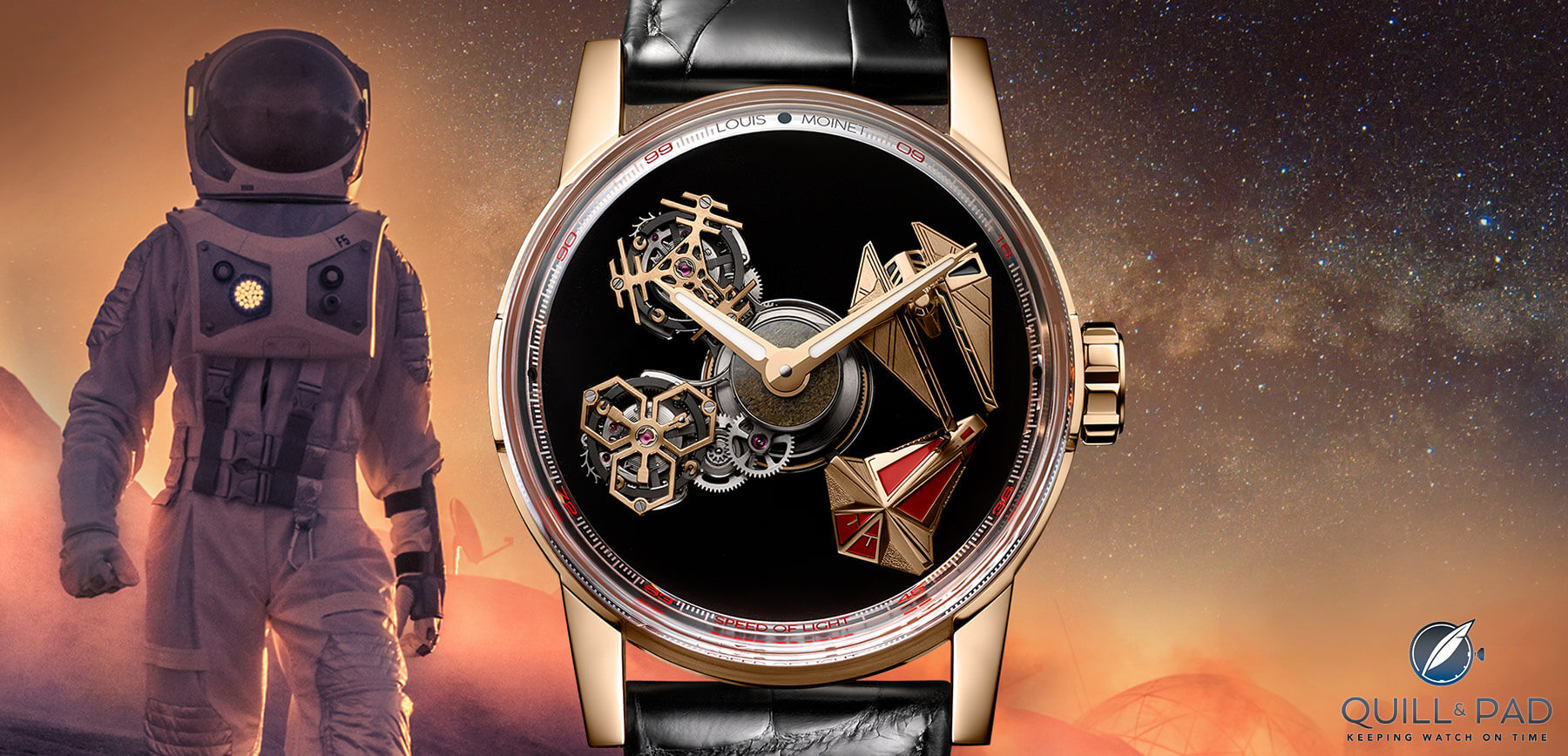
Louis Moinet Space Revolution
What makes the Space Revolution so unique is its dial-side animation displaying two tourbillons, each orbiting the dial in opposite directions, carry a titanium spaceship on their “tails.” The spaceships and tourbillons are placed on different levels and cross each other 18 times an hour, looking for all the world like they are partaking in an epic space battle.
The effect is pure science fiction fantasy on the wrist.
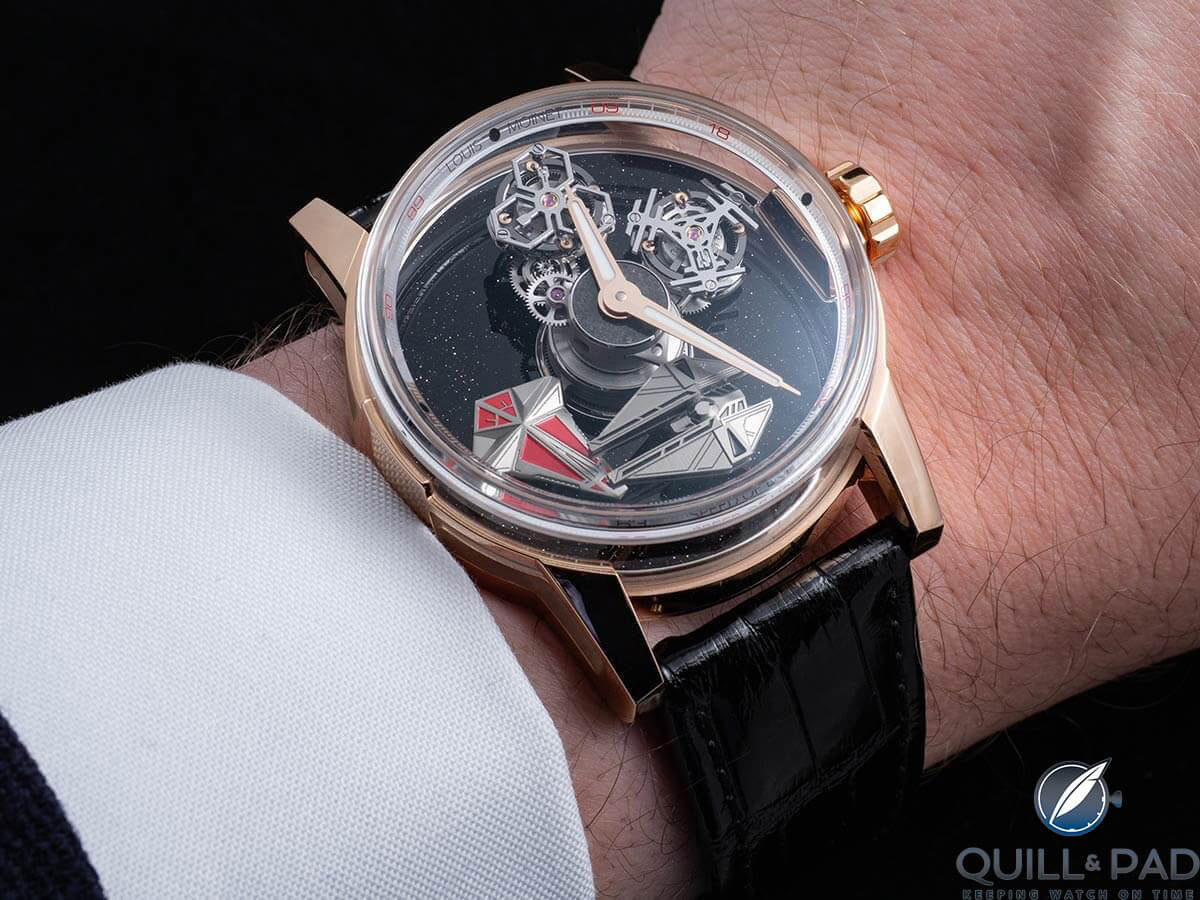
Louis Moinet Space Revolution on the wrist
Rotating spaceships, rotating tourbillons
The two spaceships, made of titanium and hand-painted with a hybrid ceramic color, weigh in at half a gram each. They prove to be excellent entertainment with their night-sky clash and act as counterweights to the twin orbiting 60-second tourbillons. A differential averages the rates of the two tourbillons, augmenting the movement’s precision.
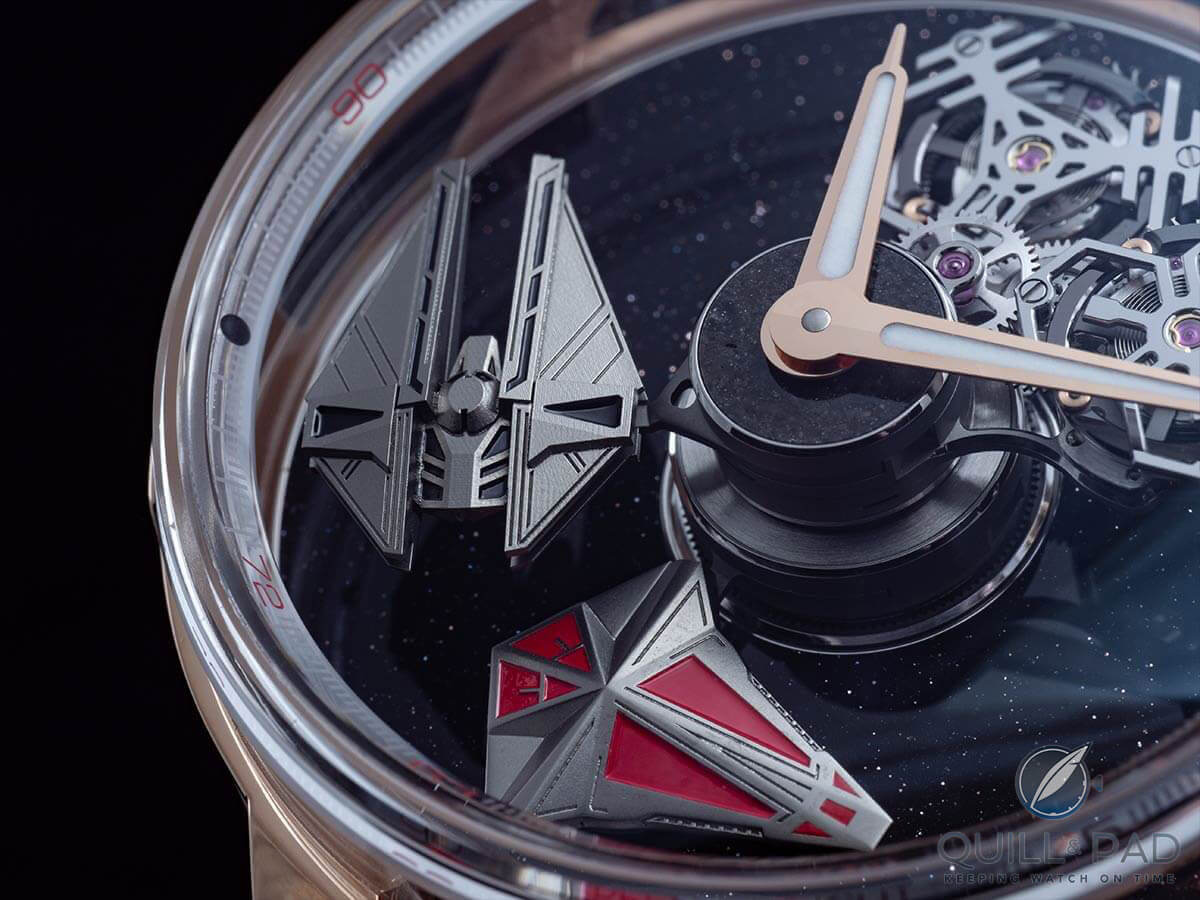
Louis Moinet Space Revolution dial
Tirelessly, the kite-shaped vessels loosely resembling Star Wars TIE starfighters face off 18 times per hour. The top spaceship makes a clockwise revolution around the dial in five minutes, while the lower-level craft makes a counterclockwise revolution below the tourbillons every ten minutes.
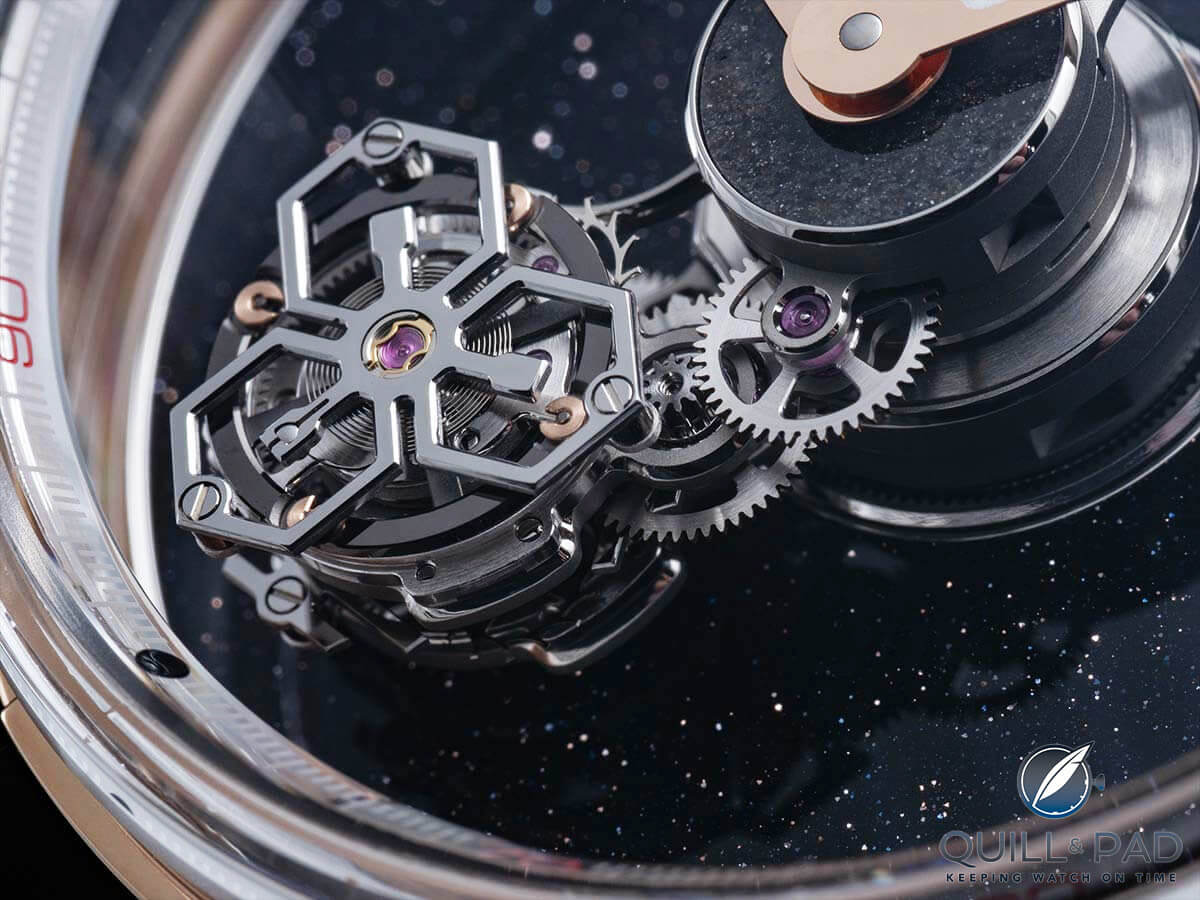
One of two Louis Moinet Space Revolution tourbillons with satellite-shaped carriage
All this sci-fi theater extrudes from the central, multifunctional pillar made of titanium and gold, the smooth running of which is only possible thanks to no less than six ceramic ball bearings.
As if that were not enough, there is also a literal space connection at the top of the pillar: a unique meteorite fragment beneath the hands. On one of the eight limited edition watches this fragment comes from the moon; on another from Mars; on yet another from the oldest known rock in the solar system; and still another is a meteor fragment containing amino acid, the beginning of life on earth. These unique space souvenirs individualize the eight watches, making each one unique.

Louis Moinet Space Revolution
And . . . action!
The eight smoothly animated elements – the two hands, the two satellites forming the tourbillon cages, the tourbillons themselves, and the two battling spaceships – make the Space Revolution one of the most action-packed, playful, horological shows I have ever seen.
It is as if kinetic artist Jean Tinguely came down from his cloud reborn as a watchmaker and collaborated on a horological project with George Lucas.
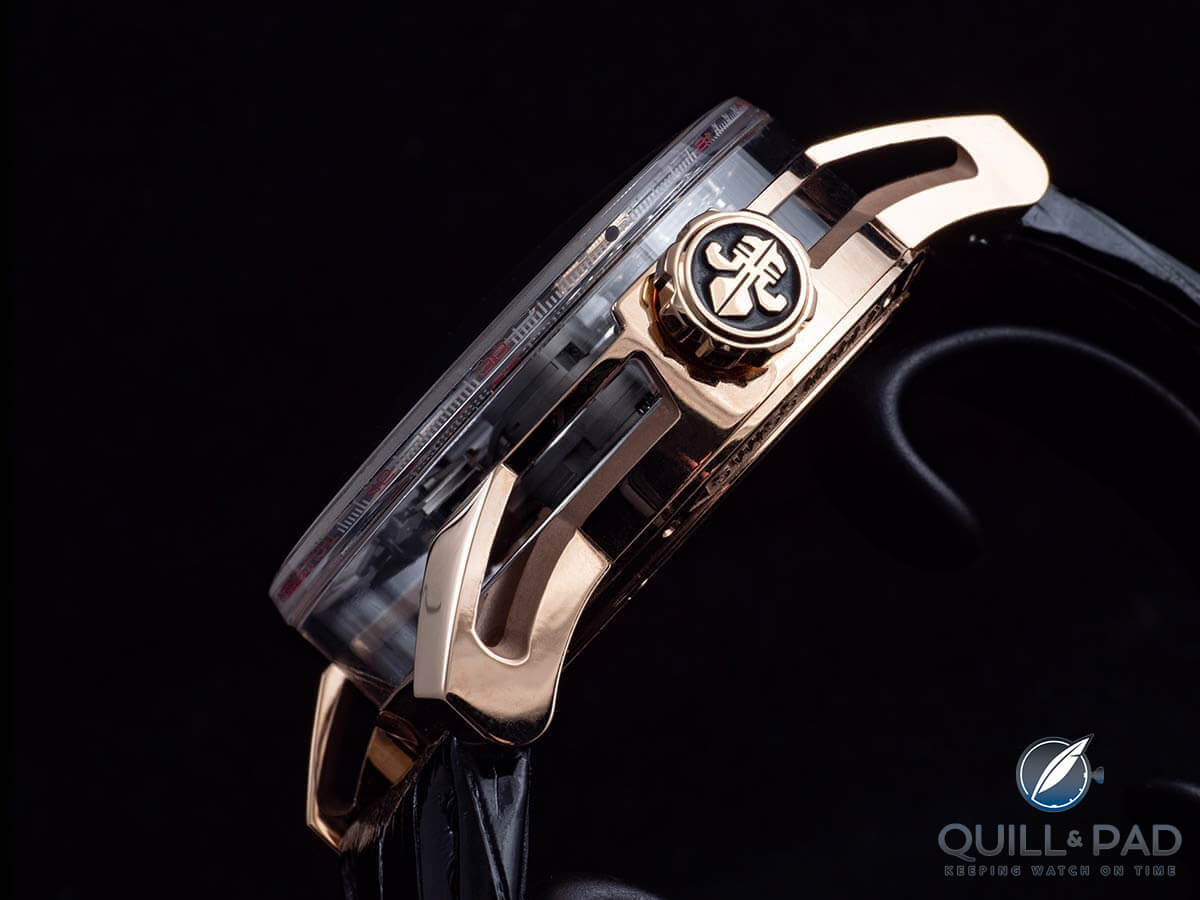
Louis Moinet Space Revolution in profile: note the high sapphire crystal
Inserting a flange appearing to float between the dial and the box crystal sapphire dome creates the effect of looking into deep space. “To establish the Space Revolution as a landmark creation of its time, we had to set aside all our certainties. In a complete break with the past, the 43.5-millimeter case has been fully redesigned. Made from polished, satin-finish gold, the base supports the [41.6 mm] sapphire crystal dome, allowing the magic to be admired from the side as well as from above,” said Louis Moinet CEO Jean-Marie Schaller.
Further amplifying the dream of outer space, a vanguard technology provides the dial with the ability to absorb light. This is achieved by laser-cutting the titanium base to give it a nanostructure, which can be described as wells gobbling up light and endowing the dial with black hole-like properties. It is not black like Vantablack, but the principle of a structure to capture light is similar.
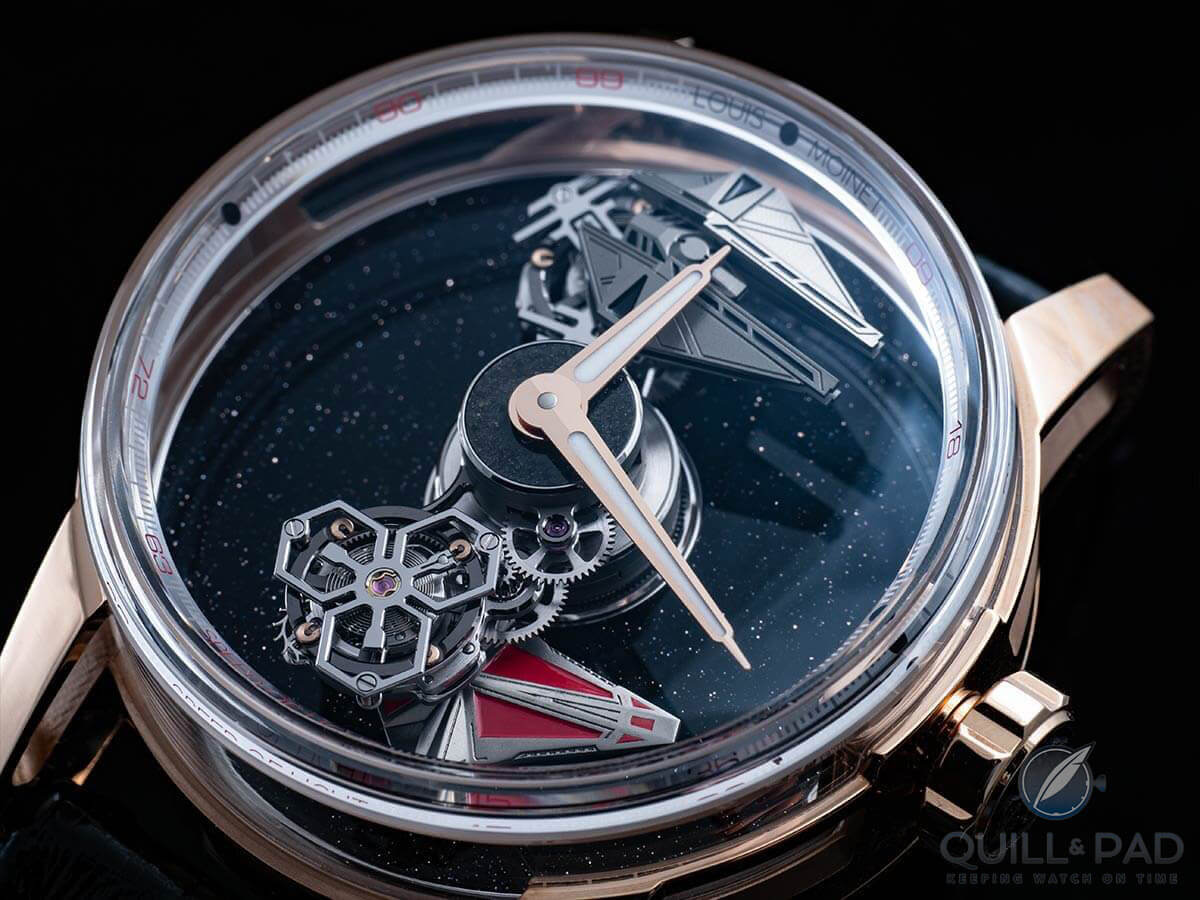
Louis Moinet Space Revolution
Time measured as speed of light
If you look closely at that flange you may wonder about the indexes: what does the 0-99 stand for? Well, the speed of light is roughly 300,000 kilometers per second. This means light travels 90 million kilometers in five minutes, 180 million kilometers in ten minutes, and so on. The numerals therefore represent the speed of light, a playful design gesture reminding us of the most fundamental cosmic rule.
Turning the 43.5 millimeter gold case over reveals both the twin mainspring barrels at 6 and 12 o’clock supplying energy to the whole system and a generously sized, user-friendly function selector for the crown.
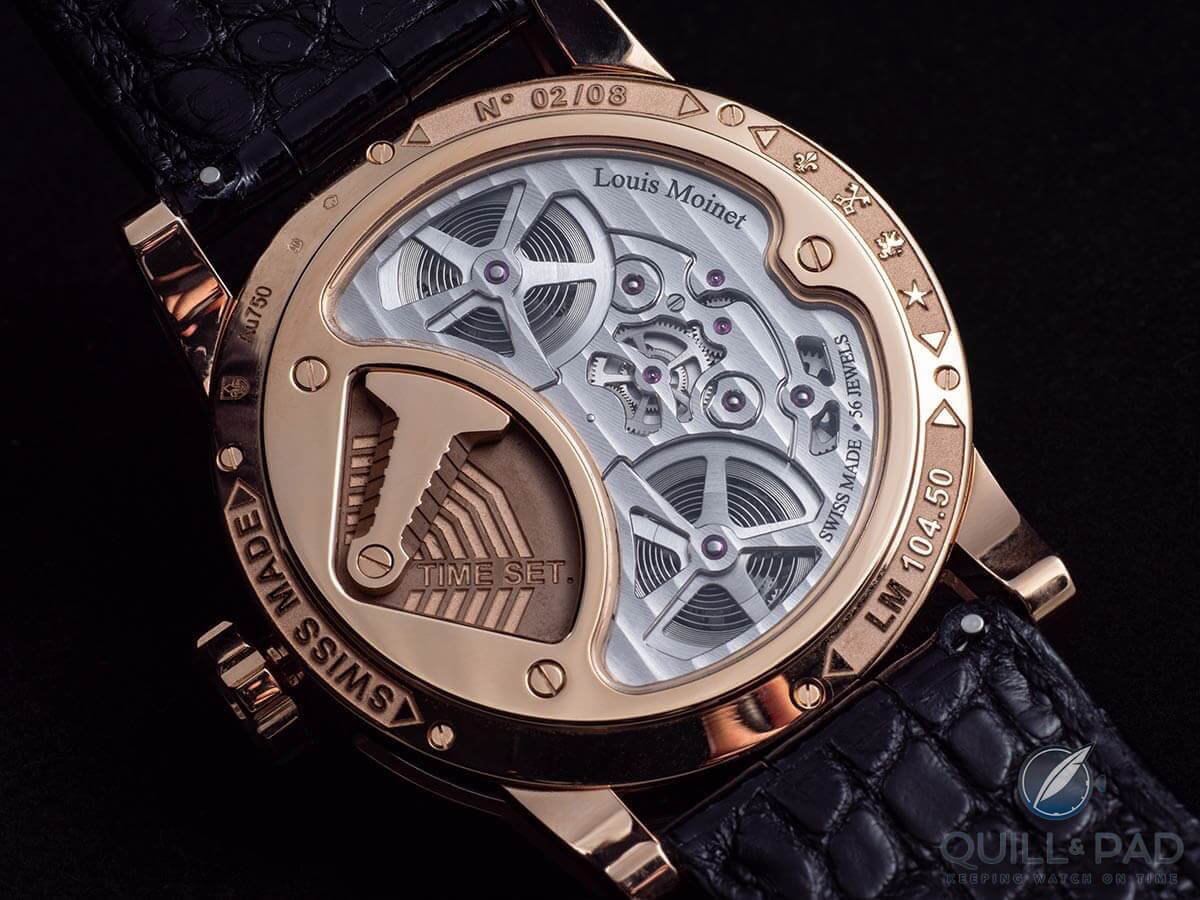
Back of the Louis Moinet Space Revolution
This function selector has two positions: setting or winding the 470-component movement. Given the extraordinary show on the dial side, I am surprised by the simple design of the back of the movement featuring little visible in the way of finishing through the large crescent-shaped aperture aside from Geneva stripes.
“We wanted to make something technical that did not exist before,” Schaller sums up his Space Revolution. “We wanted to push it further, beyond the boundaries, transform it into a space object that is more than a watch.”
So is Space Revolution a watch or a piece of kinetic art? The answer is simple: it is both.
For more information, please visit www.louismoinet.com/product/space-revolution.
Quick Facts Louis Moinet Space Revolution
Case: 43.5 mm, pink gold
Dial: laser-cut nanostructured titanium
Movement: hand-wound Louis Moinet Caliber LM 104 with two separate one-minute tourbillons, 21,600 vph/3 Hz frequency, 48-hour power reserve, twin mainspring barrels
Functions: hours, minutes; spaceship animation, crown function selector on back (winding and time setting)
Limitation: 8 pieces, each with a unique meteorite in the center
Price: 360,000 Swiss francs
You may also enjoy:
Louis Moinet Spacewalker: Spectacularly Highlighting First Human Spacewalk By Alexey Leonov
Louis Moinet Space Mystery: Amino Acids Abound!
Memoris By Louis Moinet: Paying Homage To Historical Chronographic Ingenuity





















































Leave a Reply
Want to join the discussion?Feel free to contribute!